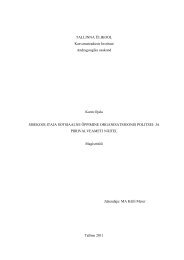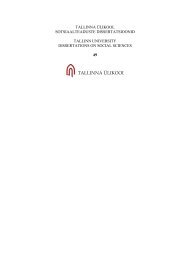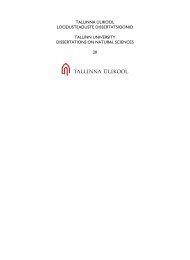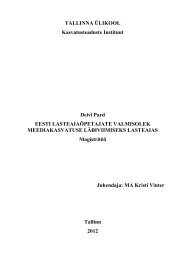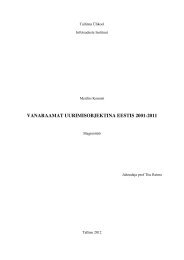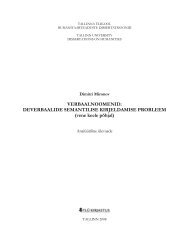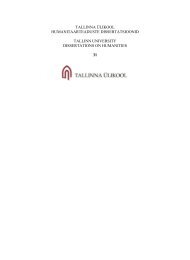Download (1157Kb) - E-Ait
Download (1157Kb) - E-Ait
Download (1157Kb) - E-Ait
Create successful ePaper yourself
Turn your PDF publications into a flip-book with our unique Google optimized e-Paper software.
2.4.2. Organisational Factors. ..................................................................................................... 19<br />
2.4.2.1. Organisational Culture. ............................................................................................. 20<br />
2.4.2.2. Organisational structure. ........................................................................................... 21<br />
2.4.2.3. KS strategy. ............................................................................................................... 22<br />
2.4.2.4. Leadership ................................................................................................................. 23<br />
2.4.3. Technological Factors. ....................................................................................................... 24<br />
Chapter Three: Theoretical framework and methodology.<br />
3.Theoretical Framework. ..................................................................................................................... 27<br />
3.1.Theoretical perspective. ................................................................................................................. 29<br />
3.2.Methodology. ................................................................................................................................. 30<br />
3.3.Research design. ............................................................................................................................. 30<br />
3.4.Area of study. .................................................................................................................................. 30<br />
3.5.The population. ............................................................................................................................... 30<br />
3.6.Sampling. ........................................................................................................................................ 31<br />
3.7.Data collection methods. ................................................................................................................ 32<br />
3.7.1. Questionnaires. .................................................................................................................. 32<br />
3.7.2. Using secondary data. ....................................................................................................... 32<br />
3.8.Research Instruments. .................................................................................................................... 33<br />
3.9.Data analysis and presentation. ..................................................................................................... 33<br />
3.10.Research Limitations and Time frame. ......................................................................................... 34<br />
3.11. Chapter summary ........................................................................................................................ 34<br />
Chapter four: Data analysis and presentation of the findings.<br />
4.Introduction. ...................................................................................................................................... 36<br />
4.1.How is knowledge shared ............................................................................................................... 36<br />
4.1.1. The current state of knowledge sharing. ........................................................................... 37<br />
4.1.2. The implication of formal knowledge sharing in the absence of informal knowledge<br />
sharing. 38<br />
vii





